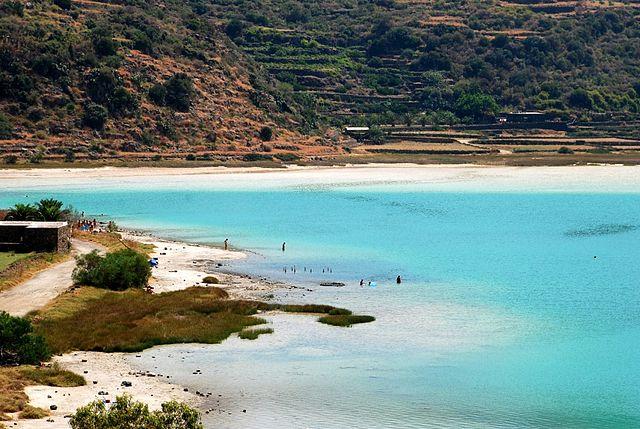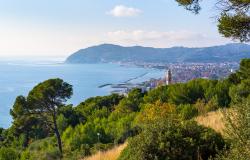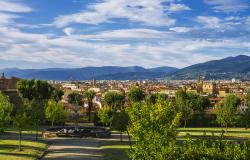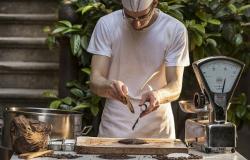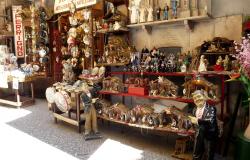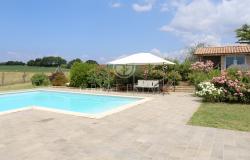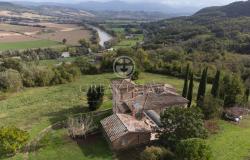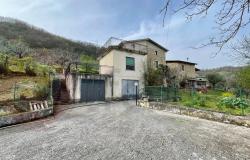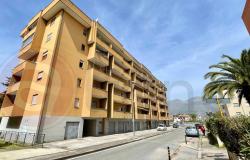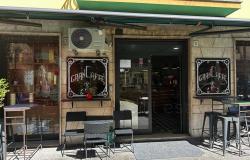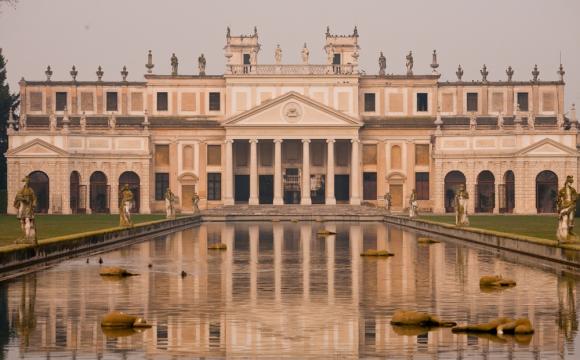L’Asinara, Sardinia
 L’Asinara is molten crystal over a bed of low, curvy rocks, ice white surf crashing against harsh cliffs, sunken prairies of Posidonia oceanica and dark recesses teeming with lobsters. It is the salty air scented with juniper and Montpelier cistus, the grating noise of a seagull’s cry, the vigorous caress of the winds that bends the island’s few trees. It is absolute colours—the blinding white of tiny pink-eyed donkeys grazing among the green scrubland under an impossibly blue sky.
L’Asinara is molten crystal over a bed of low, curvy rocks, ice white surf crashing against harsh cliffs, sunken prairies of Posidonia oceanica and dark recesses teeming with lobsters. It is the salty air scented with juniper and Montpelier cistus, the grating noise of a seagull’s cry, the vigorous caress of the winds that bends the island’s few trees. It is absolute colours—the blinding white of tiny pink-eyed donkeys grazing among the green scrubland under an impossibly blue sky.
It is hard to believe that this hauntingly beautiful island of blinding sun and transparent waters has a gloomy past, first as camp for prisoners of war in the early 20th century and later as one of Italy’s high-security jails from which only two men, a Sardinian bandit called Matteo Boe and his accomplice Salvatore Duras, ever managed to escape.
This dramatic history, however, turned out to be a blessing in disguise. Since access to L’Asinara was severely restricted for about a century—only a handful of people with a special permit, usually members of the judiciary or academics carrying out field studies, could visit it in the past—it has remained genuinely wild. Which is why it is still home to tortoises, the rare Audouin’s gull, the tiny Sardinian hare and a variety of thistle so old it is considered a living fossil—the Centaurea Horrida, which, despite its name, has exquisitely pretty flowers.
The only buildings on the island are the former jail—which might soon be turned into a hotel or a library, and currently hosts festivals and special events—the handful of whitewashed houses of Cala D’Oliva, a candid lighthouse perched high on a cliff at Punta Lo Scorno, and the taupe bulk of a Spanish watchtower overlooking the pure white beach of Cala d’Arena.
Practical details: L’Asinara now is a National Park and visits are subject to some rules to limit the impact on the environment. Visitors can reach the island by boat (either with one of the park-approved services or with a private sailing boat) and can explore it either individually or in a guided tour on foot, on horseback, by sailing boat, by train, by bicycle or by 4x4. Authorised fishermen and diving operators offer a taste of the island by sea. There is no hotel on L’Asinara but there is a hostel offering basic accommodation (with shared bathroom) at affordable prices. More luxurious accommodation is available on the hotels on the Sardinian mainland, where the boats to L’Asinara depart. There is one restaurant on the island serving fresh seafood. A list of all the operators is available on the park’s website, www.parcoasinara.org, in Italian only. The best time to visit is Spring.
Great for: nature at its wildest. The word pristine acquires a deeper significance here. Not so great for: celebrity spotting. There aren’t any, unless you count the world-famous white donkeys.
Ponza, Lazio
 Jagged cliffs fall white and sheer into a sea of cobalt and turquoise. Soft crystalline crests dance gently over submerged rocks. Soft pink, baby blue and whitewashed houses perch high on a hill overlooking a gulf studded by fishing and sailing boats.
Jagged cliffs fall white and sheer into a sea of cobalt and turquoise. Soft crystalline crests dance gently over submerged rocks. Soft pink, baby blue and whitewashed houses perch high on a hill overlooking a gulf studded by fishing and sailing boats.
Ponza—a volcanic throw-out of kaolin and tuff—stretches long and narrow off the Gulf of Gaeta.
Inland, it is a carpet of agave, gorse and prickly pears. Along the shore, it is a magical landscape of soaring arches carved into cream-white outcrops, spire-topped boulders looming large over the sea, and secret waterline caves. Underwater, colonies of red gorgonia are home to lobsters and groupers while some caves draw armies of prawns.
Just off the coast, scrub-strewn stacks pepper the sea. One of them, the Faraglione Lucia Rosa, is at the heart of a tragic love story reminiscent of Romeo and Juliet. Forbidden to marry the young, impoverished farmer she had fallen in love with, a Ponzian girl, Lucia Rosa, threw herself from the stack in the 19th century. The people of the island commemorated her by giving the rock her name.
The sunset over Chiaia di Luna beach—a slim neck of land caught between the dazzling candour of the cliffs and the azure of the sea—is just as romantic, but more down to earth types might prefer a table at a restaurant to a walk along the shore: Ponza’s food is glorious, especially prawns enlivened by a touch of chilli.
Practical details: a fast ship service links Ponza to Terracina in fifty minutes and to San Felice Circeo in an hour. Ferry and hydrofoil services to Anzio and Formia take one hour and ten minutes. Other services are available to Formia, Anzio, Terracina and Naples, but they take longer. The island has plenty of hotels (from two to four stars), some B&Bs (including one, the Limonaia a Mare, belonging to one of the Fendis from the fashion dynasty), excellent restaurants (Acqua Pazza among them) and wineries. Ponza gets busy in high summer, when it attracts its fair share of Italian footballers, actresses and their hangers on, but it is virtually empty at other times of the year.
Great for: scuba diving, fishing, majestic outcrops and waterscapes. Not so great for: sandy beaches—Chiaia di Luna is practically the only one.
Pantelleria, Sicily
 A magic stillness wraps Pantelleria, broken only by the gusts that earned it the Arabic nickname of Bent–el-Rhia, daughter of the wind. The sea is a changing expanse of sapphire blue, azure and rich aqua flowing in and out of whimsical caves, bobbing under the Arco dell’Elefante, an arch rock that is the visual symbol of the island, and lapping a tortured coastline borne of ancient volcanic eruptions.
A magic stillness wraps Pantelleria, broken only by the gusts that earned it the Arabic nickname of Bent–el-Rhia, daughter of the wind. The sea is a changing expanse of sapphire blue, azure and rich aqua flowing in and out of whimsical caves, bobbing under the Arco dell’Elefante, an arch rock that is the visual symbol of the island, and lapping a tortured coastline borne of ancient volcanic eruptions.
Pantelleria’s inner turmoil still explodes in columns of steam—the favare—that blow from crevices in the rocks, and in the thermal waters that spring hot from the rocks. At Kazzen e Benikulà, the hot steam blows inside the caves creating a natural sauna, or ‘stufa’, while in Sataria—a miracle of blues and creams, sun and shade where legend has it that Odysseus met the nymph Calypso—the sea bathes the threshold of a cave, while thermal water springs from the innermost walls.
But perhaps the most beautiful reminder of the island’s volcanic origin is the Lago Specchio di Venere, Venus’ mirror, where the intense turquoise of thermal waters fills a caldera and reflects mellow peaks that are nearly as beautiful as the goddess herself. Around it, the countryside is filled with the scents of capers, and covered by acres of heather punctuated by the brilliant green of mastic, the yellow splashes of gorse and the low mounds of the dammusi, farmers’ homes with a domed roof.
“I remember like a dream the sunny plain of volcanic rock, the eternal sea, the whitewashed house,” wrote author Gabriel Garcia Marquez, who spent a summer on the island in 1969. “I don’t think there is another place in the world better suited to think of the moon.”
Practical information: Pantelleria can be reached by ship, hydrofoil or aeroplane from Trapani, and by aeroplane only from Palermo. It has a wide choice of hotels, rental apartments and restaurants that serve specialities such as mint and ricotta ravioli, red pesto and fish cuscus. Don’t leave without buying some capers and a bottle or two of zibibbo, the sweet local wine. Spring and autumn are the best seasons to enjoy the thermal springs.
Great for: rock sculptures, plunging into a hot spring by the sea, having a natural mud treatment in a volcanic lake, and cruising the island by boat to soak up wild views. Not so great for: lounging on a beach—you’d be hard-pushed to find one.
